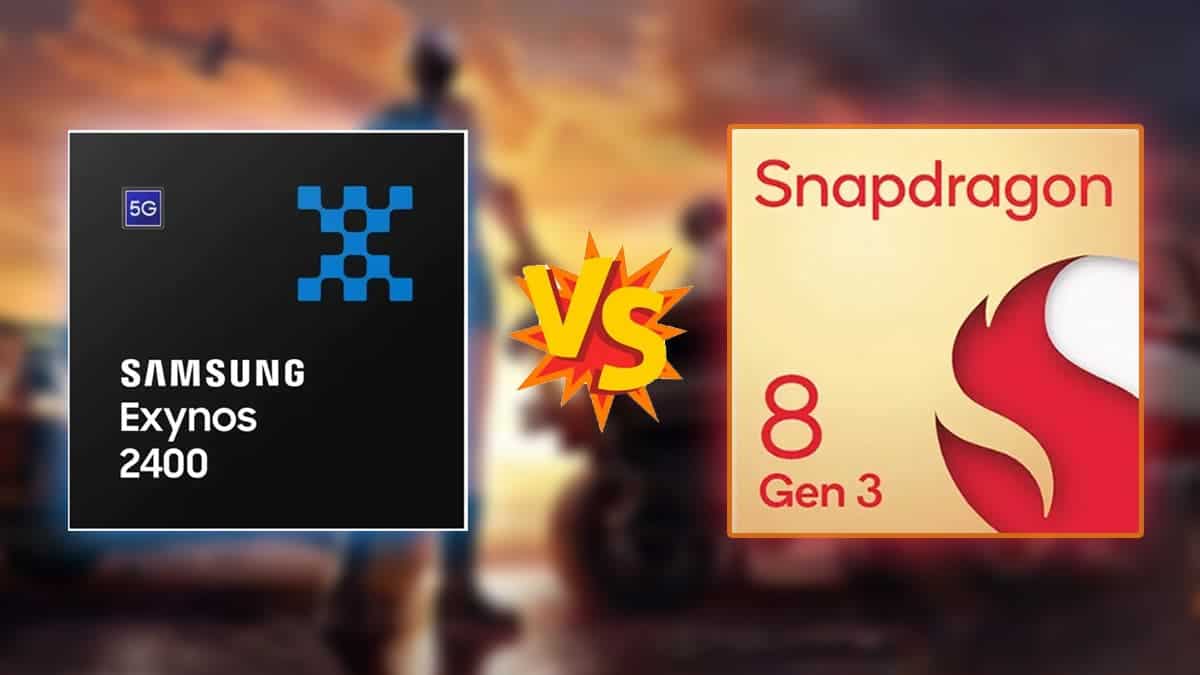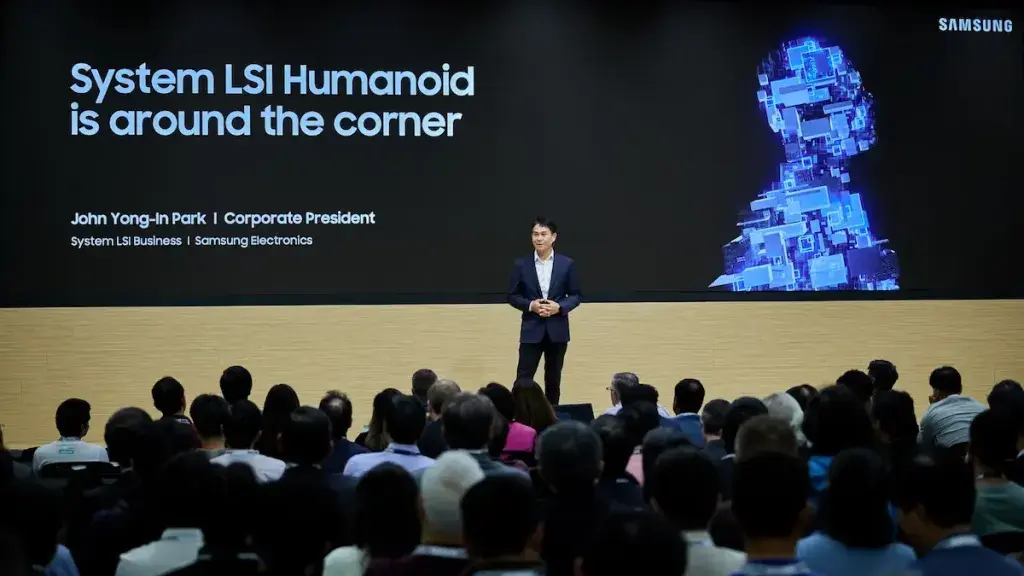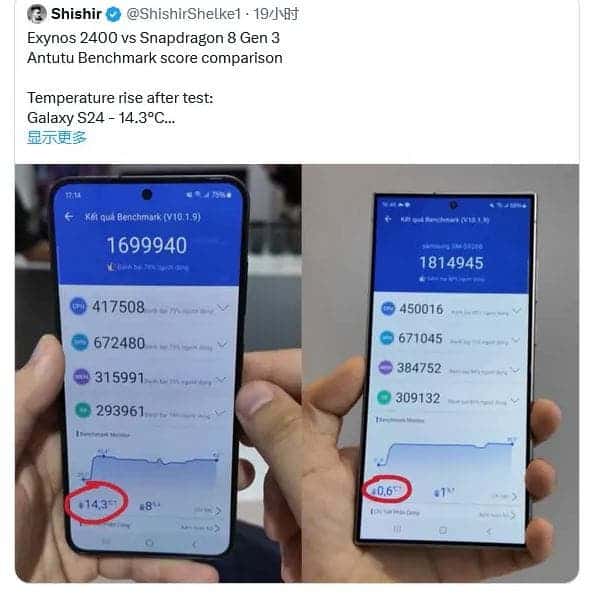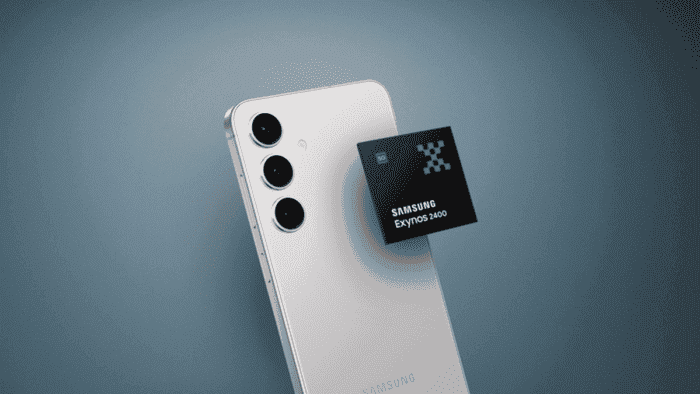A few days ago, South Korean manufacturing giant, released its latest mobile chip, Exynos 2400. This chip arrived with the Galaxy S24 series and it is coming two years after its predecessor, Exynos 2200 hit the market. The Exynos 2200 was criticized for a couple of drawbacks including its inconsistent CPU performance, significant drops in performance during stress tests, and lower benchmark scores compared to the Snapdragon 8 Gen 1 and even the iPhone 11’s A13 Bionic. After two years of research and development, Samsung had enough time to make amends with the Exynos 2400. However, did Samsung move forward with this chip or it missed the opportunity to catch up with Qualcomm Snapdragon chips?

The Samsung Exynos 2400 is a mobile system-on-chip (SoC) that powers the standard Galaxy S24 and Galaxy S24+ in most regions around the world. This chipset is designed to compete with the Snapdragon 8 Gen 3, which powers the Galaxy S24 Ultra in all markets. In this article, we will analyze the major aspects of the Exynos 2400, discuss its performance compared to the Snapdragon 8 Gen 3, and evaluate whether it is a step forward for Samsung or a missed opportunity.
Exynos 2400 details
CPU Performance
The Exynos 2400 features a 10-core CPU, consisting of one Cortex-X4 core at 3.16GHz, two Cortex-A720 cores at 2.9GHz, three Cortex-A720 cores at 2.6GHz, and four low-power Cortex-A520 cores at 1.95GHz. On the other hand, the Snapdragon 8 Gen 3 has an 8-core Kryo CPU with a peak frequency of 3.2GHz for the Cortex-X4 core, 2.9GHz for the Cortex-A720 cores, 2.6GHz for the Cortex-A720 cores, and 2.0GHz for the Cortex-A520 cores. In terms of CPU performance, the Exynos 2400 comes close to the Snapdragon 8 Gen 3.
Samsung’s last mobile chip before the Exynos 2400 was the Exynos 2200 which hit the market in 2022. This chip was competing with the Snapdragon 8 Gen 1 which was also released in 2022. In a detailed comparison by Android Authority, the Exynos 2200 was well beaten by the Snapdragon 8 Gen 1. Thus, Samsung has done quite well by closing the gap between the Exynos 2400 and Snapdragon 8 Gen 3.

GPU Performance
The Exynos 2400 is equipped with an AMD RDNA 3-based Xclipse 940 GPU while Snapdragon 8 Gen 3, on the other hand, features an Adreno 740 GPU. The GPU performance of the Exynos 2400 and the Snapdragon 8 Gen 3 has been compared in various benchmarks and tests. According to the benchmarks, the Snapdragon 8 Gen 3 generally outperforms the Exynos 2400 in GPU performance.
In the AnTuTu benchmark, the Snapdragon 8 Gen 3 scored 902,878 in the GPU test, while the Exynos 2400 scored 590,540, indicating better GPU performance and efficiency for the Snapdragon 8 Gen 3. Similarly, in the 3DMark Wild Life test, the Adreno 750 GPU on the Snapdragon 8 Gen 3 outperformed the Xclipse 940 GPU on the Exynos 2400, with a 18% difference in the GPU performance. However, in a Genshin Impact gaming test, the Exynos 2400 performed as well as the Snapdragon 8 Gen 3, suggesting competitive performance in real-world gaming scenarios. While the Exynos 2400 has a higher GPU frequency, the benchmarks indicate that the Snapdragon 8 Gen 3 generally offers better GPU performance. In gaming performance, the Exynos 2400 has surprised many with its ability to outperform the Snapdragon 8 Gen 3 in some game titles.
AI Processing
Samsung claims that the new chip delivers 70% faster CPU performance and up to 14.7x faster AI processing than the Exynos 2200. The chipset also features a next-gen 5G modem with NTN (Non-Terrestrial Networks) technology, which could potentially hint at satellite connectivity like the iPhone. With a 70% improvement, this is quite a decent step forward for Samsung.

Specific Benchmark Comparison
AnTuTu 10
The Exynos 2400 and Snapdragon 8 Gen 3 are both high-performance system-on-chips (SoCs) used in smartphones. In the AnTuTu 10 benchmark, the Snapdragon 8 Gen 3 scored 2076K, while the Exynos 2400 scored 1652K. This indicates a 26% better performance for the Snapdragon 8 Gen 3.
3DMark Wild Life Extreme test
In the 3DMark Wild Life Extreme test, the Exynos 2400 scored 4,304 with 25.78 FPS. As for the Snapdragon 8 Gen 3, it scores 5,114 with 30.63 FPS. This results in an 18% performance difference.
Geekbench 6
On the Geekbench 6 single-core test, the Exynos 2400 scored 2046, while the Snapdragon 8 Gen 3 scored 2228. In the multi-core test, the Exynos 2400 scored 6687, while the Snapdragon 8 Gen 3 scored 6858. The Snapdragon 8 Gen 3 generally outperforms the Exynos 2400 in benchmark tests. However, the new Exynos chip has a higher GPU frequency and more CPU cores. These provide better performance in certain scenarios.

Conclusion
In the dynamic landscape of mobile processors, Samsung’s unveiling of the Exynos 2400 sparks a compelling debate. Is it a significant stride for the company or a missed opportunity to close the gap with Qualcomm’s Snapdragon series? The Exynos 2400, powering the Galaxy S24 series, follows its predecessor’s criticisms but aims for redemption. With a 10-core CPU and impressive AI advancements, it competes closely with the Snapdragon 8 Gen 3.
While benchmarks indicate Snapdragon’s GPU dominance, real-world gaming performance surprises. Samsung’s commitment to improvement is evident, addressing past shortcomings. Samsung’s new chip showcases a commendable evolution, asserting Samsung’s resilience in the fiercely competitive mobile processor arena. As it drives the Galaxy S24 lineup, this chip embodies Samsung’s pursuit of excellence. It marks not only a step forward but a testament to the continuous refinement of its technology. So, would you love to try out a mobile phone with the Exynos 2400? or you would prefer the Snapdragon 8 Gen 3? Let us know your thoughts in the comment section below
Author Bio
Efe Udin is a seasoned tech writer with over seven years of experience. He covers a wide range of topics in the tech industry from industry politics to mobile phone performance. From mobile phones to tablets, Efe has also kept a keen eye on the latest advancements and trends. He provides insightful analysis and reviews to inform and educate readers. Efe is very passionate about tech and covers interesting stories as well as offers solutions where possible.





